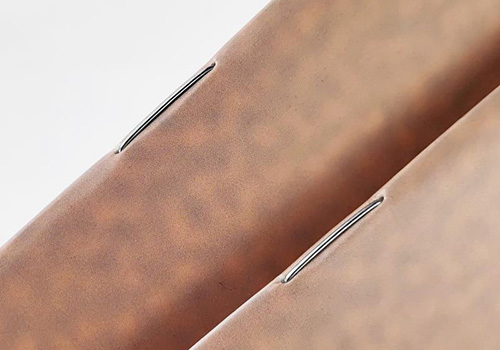Date: 27 Apr 2020 | Tag: heavy duty stapler
The Saddle Staple method is most effective for binding booklets and publications with around 64 pages or less. Books with more pages may become bulky when folded and may not lie as flat as desired when Saddle Stitched. In the printing industry, Saddle Stitching refers to a very popular book binding method for lightweight booklet, brochures and magazines etc. A Saddle heavy duty stapler will be a helpful tool for a large work in Saddle Stitching. The staples pass through the folded crease from the outside and are clinched between the center most pages. Two staples are commonly used but larger books may require more staples along the spine.
The saddle stitch binding sounds like a peculiar name for the binding process that places wire staples through sheets of paper, but in the printing industry, stapling is often called stitching. Similarly, in the stapling / stitching process, the finished paper is stacked on a saddle-shaped device, hence the name "saddle-shaped binding".
The saddle stitch binding operation is performed after the pages and covers have been printed, partially folded and nested together. After being connected with staples, the cover and pages of the book will be folded tightly together. Some thicker Saddle Stitched books are trimmed along the edge opposite the spine to keep the pages uniform and neat in appearance. Books and other documents that are commonly Saddle Stitched include programs, wall calendars, booklets, newsletters, pamphlets, direct mailers, comic books, thinner magazines and catalogs.
By its nature, Saddle-Stitching requires the book’s page count to be in multiples of four. This means the minimum book size is either an 8-page self-cover book or a 4-page + cover book… both of which are created from two folded sheets nested together.
The maximum number of pages is largely dependent upon the thickness of the paper used to create the book. This is because the staples can only accommodate so many sheets of a given thickness. Too much bulk and a saddle-stitch book will not lie flat…it will be inclined to “spring open.” This is especially true for books of a small physical size.
As a general rule, 64 pages or less will normally produce a nice flat booklet. If the paper used for the pages is very thin, saddle-stitched booklets can be made with 100 pages or so. Once the page count of a booklet goes beyond the limit of what the saddle-stitch method can accommodate, the Perfect Binding and Coil Binding methods are recommended.
The main benefit of saddle stitching is that it’s the most affordable way of binding multiple pages together. This makes it a very popular choice for companies and individuals who want to keep costs to a minimum but still want a product that looks and feels professional. Brochures and magazines that are bound using saddle stitching are durable and easy to open, making the technique suitable for a wide variety of printed products. Affordable and effective, it’s the perfect choice for projects that need to look good, feel secure and come in on budget.

Originally published 27 Apr 2020, updated 27 Apr 2020.